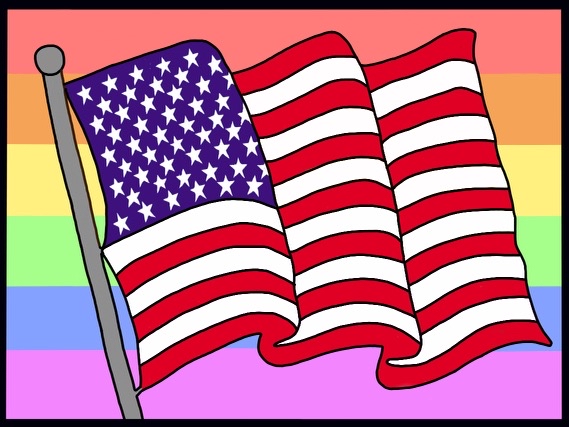Snodgrass: Queer history is US history and should be treated as such

US history curricula in many states do not require major events in LGBTQ+ history to be taught.
March 24, 2021
When looking through my American History textbook at the chapters to come, I noticed something that, while unsurprising, disappointed me: a total lack of historic events related to LGBTQ+ people. In fact, very few states require queer history to be included in public school curriculum at all, despite these events being turning points in U.S. History. This is a problem we need to solve quickly.
In Mississippi especially, LGBTQ+ topics are commonly considered taboo, with the words “gay”, “lesbian” or “transgender” treated like curse words: not often said, and if said around children, whispered. This attitude factors into the lack of information in history textbooks that I had noticed.
One of the most major historical events commonly excluded from curricula is the Stonewall Riots of the summer of 1969. They represent a major turning point in civil rights for the LGBTQ+ community and should be included in history curricula just as other civil rights movements are. While some schools do cover Stonewall, it’s often not to the extent that they should–perhaps it would be mentioned in passing at the end of a unit on the 1960s when it should have a spotlight similar to that of the Montgomery bus boycotts. Both of these events changed the worlds of the people for whom they fought.
A second event conspicuously absent from my textbook (American History: A Survey, 13th Edition by Alan Brinkley) was the AIDS epidemic of the 1980s and 90s. This, a tragedy that tore apart so many lives while the government looked on and did nothing until under fire for it, simply not mentioned a single time in a textbook of almost 1,000 pages–it is absurd. Not only is it important to understand the impact of such an event, but it could also be relevant to today’s world in showing how ill-prepared we as a nation have been in dealing with widespread diseases.
The author of my textbook managed to include information on the rise of various sports in the U.S. but couldn’t be bothered to discuss issues of public health and human rights. This may be due to the few states who do not allow this information to be taught at all.
Yes, you read correctly. Mississippi, Alabama, Louisiana, Texas and Oklahoma explicitly ban LGBTQ+ curriculum in schools. This legislation was intended to target sex education courses (which opens up another can of worms) but has been applied to other areas including history courses and school organizations. This prevents students from having access to a safe network of peers and adults to talk to about struggles queer students face, and lack of proper sex education could lead to health problems.
There is no logical explanation for this exclusion. It is discriminatory, unsafe and deprives students of a proper education.
While it helps that some colleges like UCLA offer courses devoted to teaching queer studies, this is not commonly avaliable to high school students, and the history aspect should not be optional. LGBTQ+ history is American history. Everyone should be taught it as part of a typical US History course.
Including education about LGBTQ+ history in regular U.S. History classes isn’t only for the purpose of making sure students have a complete and accurate view of America. Teaching students these stories helps reduce stigma and makes them more aware of what their queer peers go through.
Teaching queer history isn’t just about education; it’s about empathy, love, and the creation of a more accepting future for America.










